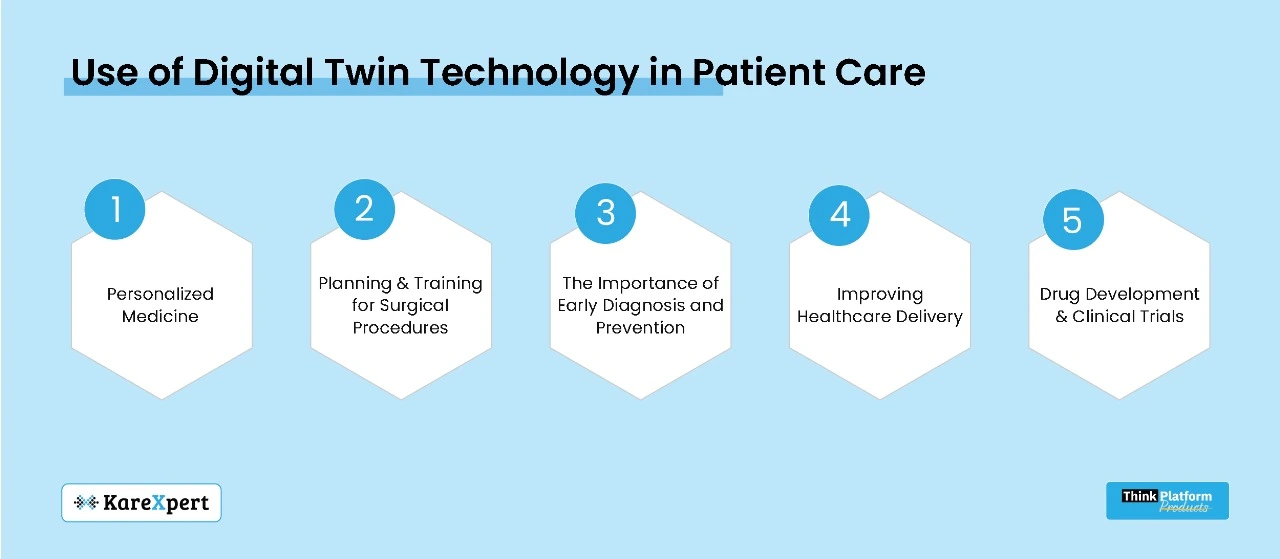Decoding the Role of Digital Twin Technology in Revolutionizing Patient Care

Q&A: Digital Twin Technology in Healthcare: An Introduction
As technology continues to shape every industry, healthcare has seen significant developments. One of the most paradigmatic of these is Digital Twin Technology — the technology that creates digital copies of physical systems or entities. Emerging from the realms of manufacturing and engineering, digital twins are transforming patient care, empowering accurate simulations, predictive interventions, and personalized treatment. But how does this impact the future of healthcare? In this blog, we explore digital twin technology, its specific applications in patient care, and how it can transform the industry.
What is Digital Twin Technology?
A digital twin is a live, virtual model of a physical object, which could be a machine, organization, or even a human body. It uses real-time data, sophisticated analytics, and machine learning to mimic and predict physical traits and behaviors.
In healthcare, a digital twin might represent:
– A particular patient’s anatomy and physiology.
– A whole hospital or healthcare system.
– Medical devices and equipment.
A new virtual mirror that can analyze, anticipate, and pitch in to improve healthcare processes and patient outcomes.
How Does Digital Twin Technology Work in Healthcare?
Digital twin technology in healthcare works through the synergy of advanced tools:
Data Collection: Sensors and wearable devices collect real-time patient data such as vital signs, activity levels, and other health metrics.
Data Feeding: These data points are fed into the digital twin, creating an accurate and real-time model of the patient.
Modeling and Simulation: The digital twin models and simulates different scenarios, such as disease progression or response to treatment, to inform decision-making.
Feed Forward Loop: Data collected from the twin informs healthcare interventions, which are fed back into the process for continuous patient insights.
Use of Digital Twin Technology in Patient Care

Personalized Medicine:
– Digital twins enable hyper-personalized treatments by simulating a patient’s reaction to different interventions.
– Treatment for Cancer: Using a patient’s digital twin, oncologists can prototype various chemotherapy regimens to determine the most effective dose with the least collateral damage.
– Chronic Disease Management: Digital twins can anticipate disease progression (e.g., diabetes or heart disease), allowing for customized care plans.
Planning and Training for Surgical Procedures:
– Pre-Operative Simulation: Patient-specific digital twins provide surgeons with a contextual overview of anatomy, improving technique and reducing risks.
– Training & Education: Trainees can practice on digital replicas, refining skills without putting patients at risk.
The Importance of Early Diagnosis and Prevention:
By continuously tracking a patient’s health metrics, digital twins detect anomalies before symptoms arise.
– Predictive Analytics: Twins foresee possible health outcomes like stroke or heart attack risk and recommend preventive actions.
– Disease Prevention: Lifestyle adjustments based on simulations avert potential diseases.
Improving Healthcare Delivery:
– Facility Management: Hospitals create digital twins of their infrastructure to monitor energy consumption, equipment performance, and space utilization.
– Workflow Optimization: Twins improve patient flow, shorten waiting times, and optimize resource allocation.
Drug Development & Clinical Trials:
– Virtual Trials: Researchers trial treatments on virtual patient cohorts, reducing costs and duration compared to traditional trials.
– Safety Testing: Digital twins forecast adverse reactions, making new treatments safer and more effective.
Real-World Applications of Digital Twin Technology: Case Studies
Philips Healthcare:
Philips has created patient-specific digital twins for cardiac care. These twins incorporate real-time data from wearable devices and hospital systems to personalize insights and improve outcomes.
Virtual Heart by Siemens:
Siemens built a digital twin of the human heart, enabling cardiologists to simulate and test conditions and treatments, such as arrhythmias or valve replacements.
University Hospitals of Leicester (UK):
Digital twins helped optimize hospital operations, improving patient flow and resource management during peak times.
Advantages of Digital Twin Technology in Healthcare
Enhanced Patient Outcomes:
– Personalized and proactive care leads to better health outcomes.
– Early diagnosis and intervention prevent severe complications.
Cost Efficiency:
– Reduces unnecessary testing, treatments, and hospitalizations.
– Optimizes resource allocation and operational processes.
Minimized Risks:
– Virtualization identifies potential complications before they arise.
– Surgical rehearsals decrease intraoperative errors.
Accelerated Innovation:
– Shortens drug development timelines and clinical trials.
– Encourages research into advanced medical technologies.
Digital Twins Implementation Practices: Challenges and Solutions
Data Security and Privacy:
Challenge: Safeguarding sensitive patient information from breaches.
Solution: Use strong encryption and adhere to regulations like GDPR and HIPAA.
High Initial Costs:
Challenge: Building and implementing digital twin systems is costly.
Solution: Public-Private Partnerships and phased rollouts can offset costs.
Interoperability Issues:
Challenge: Digital twins must communicate with existing healthcare systems.
Solution: Standard APIs and collaborative platforms ensure compatibility.
Skill Gaps:
Challenge: Healthcare professionals may lack training in digital twin technology.
Solution: Educational initiatives and cross-disciplinary collaboration are essential.
The Future of Digital Twin Technology in the Healthcare Industry
– AI-Driven Digital Twins: Advanced AI algorithms will make digital twins even more accurate and predictive.
– Integration with IoT and Wearables: Streaming data from IoT devices will enhance digital twin models.
– Global Collaboration: International initiatives will ensure that digital twin benefits reach underprivileged areas.
– Expanding Applications: Digital twins will transform hospitals, homes, mental health care, and rehabilitation.
Conclusion: A Paradigm Shift in Patient Care
Digital twin technology represents a quiet revolution in healthcare, connecting data and decision-making. By simulating patients, facilities, and processes, it enables precision care, increases operational efficiency, and drives innovation.
With the rapid adoption of digital twins, the future of healthcare will be characterized by predictive, preventive, and personalized care, ensuring better patient outcomes and a resilient healthcare system. This is not just the future; it’s the now.
